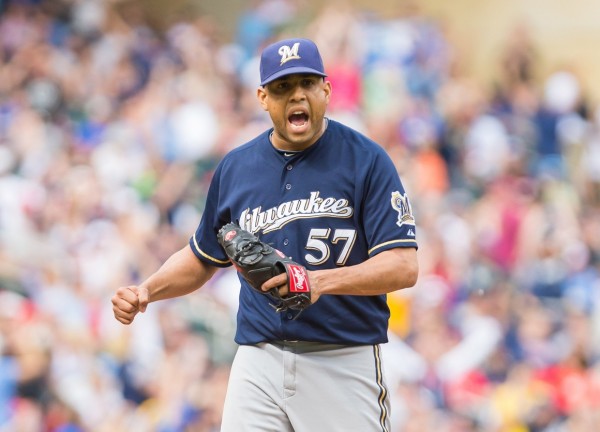About a month ago, I wrote an article about the weird timing of the Francisco Rodriguez trade with Detroit. I hypothesized that there were still a number of moving parts in the relief market that needed to settle.
Among those moving parts, Darren O’Day has re-signed with the Orioles, Ken Giles has been traded, and Aroldis Chapman will likely not be traded. In short, the relief market has settled. Almost completely, in fact. Even the Chad Qualls and Steve Cisheks of the world have found homes.
As they say, hindsight is 20/20, but let’s re-visit some things now that the Giles trade has happened. For a reliever who has thrown fewer than 120 career innings — although they may be elite innings — and a shortstop prospect in rookie-ball, the Phillies acquired Mark Appel, Vincent Velasquez, Brett Oberholtzer, Thomas Eshelman, and Harold Arauz. That’s a lot. As a refresher, K-Rod got the Brewers a 20-year-old prospect in High-A.
In no world would I compare Rodriguez and Giles. Giles was a 1.9 WARP reliever last season and is under team control until 2021. K-Rod, though worth 1.7 WARP last season, is eight years Giles’ senior and probably due for some regression. But why have the costs for relief changed so abruptly? And why is the cost for premium talent so different than the cost for good-to-great talent?
Here’s one theory: General managers still believe in the ‘proven closer.’ Let’s take a look at the differences between Giles and Carson Smith. Smith got 13 saves last season and won his team 1.7 games. Giles locked down two more games but all of his saves came on or after July 28th, the date Jonathan Papelbon left for Washington. Giles had been groomed as a closer as far back as 2012, where Smith started earning saves in the minors in 2012, as well. So wait. What’s the difference between Giles and Smith?
One could point to the fact that Giles’ 2014 campaign was also very effective, though it definitely didn’t help him build a ‘proven closer’ section on his résumé. Smith and Roenis Elias netted the Seattle Mariners lefty Wade Miley and a 25-year-old relief prospect named Jonathan Aro. While Miley was actually quite good last season at 2.5 WARP, that price is decidedly less than the package Giles got the Phillies.
Furthermore, the Red Sox have actually already felt the difference between inflated and deflated relief costs when they traded two top-100 prospects for Craig Kimbrel. Kimbrel’s sustainability as a closer has been something to behold over the past five seasons. However, last season he was worth 1.2 WARP. It is absolutely conceivable that not only Giles but also Smith have better seasons than Kimbrel.
So here’s another theory: We, as baseball fans, overvalue prospects. While I think this is generally true, I’m not sure if it applies here. There is a conceivable scenario in which the Astros didn’t need to acquire Giles and could have got similar value out of Appel or Velasquez in the bullpen. Of course, this may seem like a waste of a resource (because they could hypothetically start).
However, there’s really no plausible way that a team can simultaneously make a trade like that for Giles while also having the opinion that converting a starter into a reliever would be a ‘waste’ of an asset. That is to say, while you or I may think converting a pitcher that is capable of starting into a reliever is diminishing returns, Jeff Luhnow may not share this perspective. So, the only plausible answer is that the Astros know Giles can be excellent, and know their window of contention is opening. After all, pitching prospects are kind of expendable when your rotation looks like Houston’s
